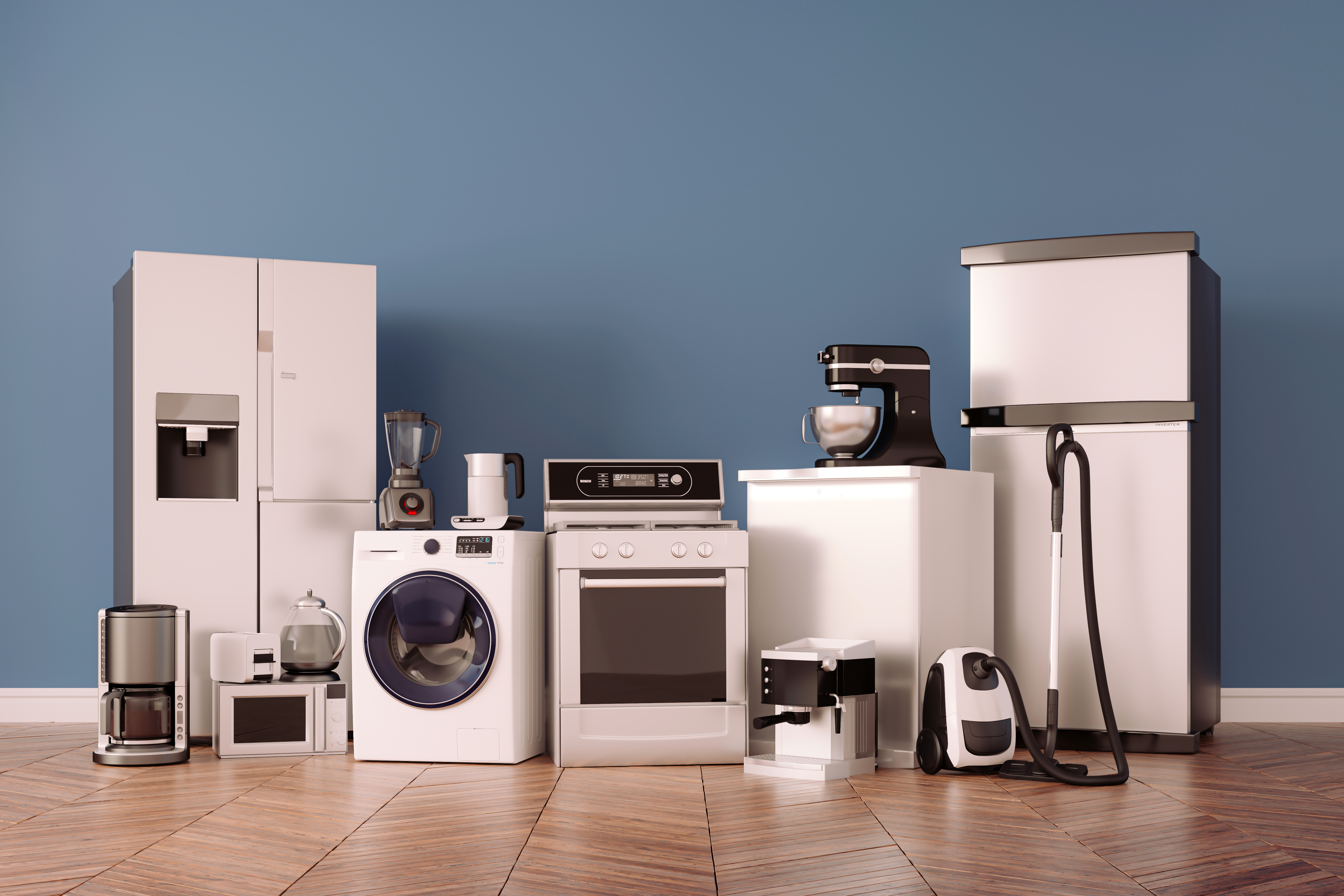The Art of Appliance Storage.
4.28.2022
When it comes to storing hefty, expensive appliances there is a right way and a wrong way to go about it. Appliances are an investment, and one that is important to protect during the moving or storing process. If you’re planning on storing any of the mentioned kitchen equipment, we can help.
1. Stove/Oven. Begin by thoroughly cleaning you stove and oven. If you can, dig out the owner’s manual for guidance on disassembly. If this isn’t possible, Google or YouTube may be able to shed some insight on your unit. It’s important to be extra cautious if you have a gas unit. Once you’ve determined how to disconnect the stove and oven safely, you’ll want to measure the size to ensure you can fit the unit through the doors of your house. Remove any parts or pieces that could potentially break loose during the moving process, so you don’t lose anything. Finally, cover and secure the unit in an upright position while it is being moved and stored.
2. Fridge. Start the process of preparing your refrigerator at least a week in advance. You’ll need sufficient time to clean, defrost, and dry out your unit. Once the fridge has been unplugged, move it to a waterproof surface or lie down towels to contain any dripping without damaging your floors. Clean and wipe down all surfaces, shelves, and drawers before storage. Any removable pieces can also be taken out and packed away for safe keeping. When you’re ready to move, it is important to keep the unit upright. You’ll also want to leave the doors open, or remove them completely, to keep the unit dry and eliminate the chance of mold or mildew buildup.
3. Microwave. This may be the easiest large appliance in your kitchen to store, thanks to its size. Begin by cleaning out the microwave and removing any glass or plastic components inside. Next, you’ll want to tape the door shut and if possible, return to its original box or one of a similar size. When storing, refrain from placing heavy items or boxes on top of the microwave to prevent damage. Like other appliances, you’ll want to store it in an upright position to keep internal parts from shifting.
4. Washing Machine. When storing this unit, it’s important to clean and dry it out before moving it to storage. Remove any debris; dirt, hair, and stains that you can find. Allow it to dry out by leaving the door open and preparing it a week in advance. To prevent injury or damage, use a dolly or cart to move the appliance. You can wrap with fabric or a blanket to prevent dings or dents to the machine.
5. Dryer. Dryers can be a bit more complicated when it comes to disconnecting and moving into storage. You’ll want to be cautious and do your research before diving in, especially if you have a gas unit. Carefully remove the duct vent + disconnect cords before moving. Wipe out the machine and remove any lint or small debris. When moving and storing, keep the unit in an upright position and allow for air flow. Leave the dryer door open in the storage unit. Much like a washing machine, take caution when moving due to the weight. Utilize a dolly or cart for assistance.
When in doubt, there are professional moving companies you can rely on. If you’re ready to tackle it on your own, always use precaution. Don’t lift items that are too heavy that could result in injury, have a friend or family member there to assist with the process, and take your time to prevent injury or damage.

